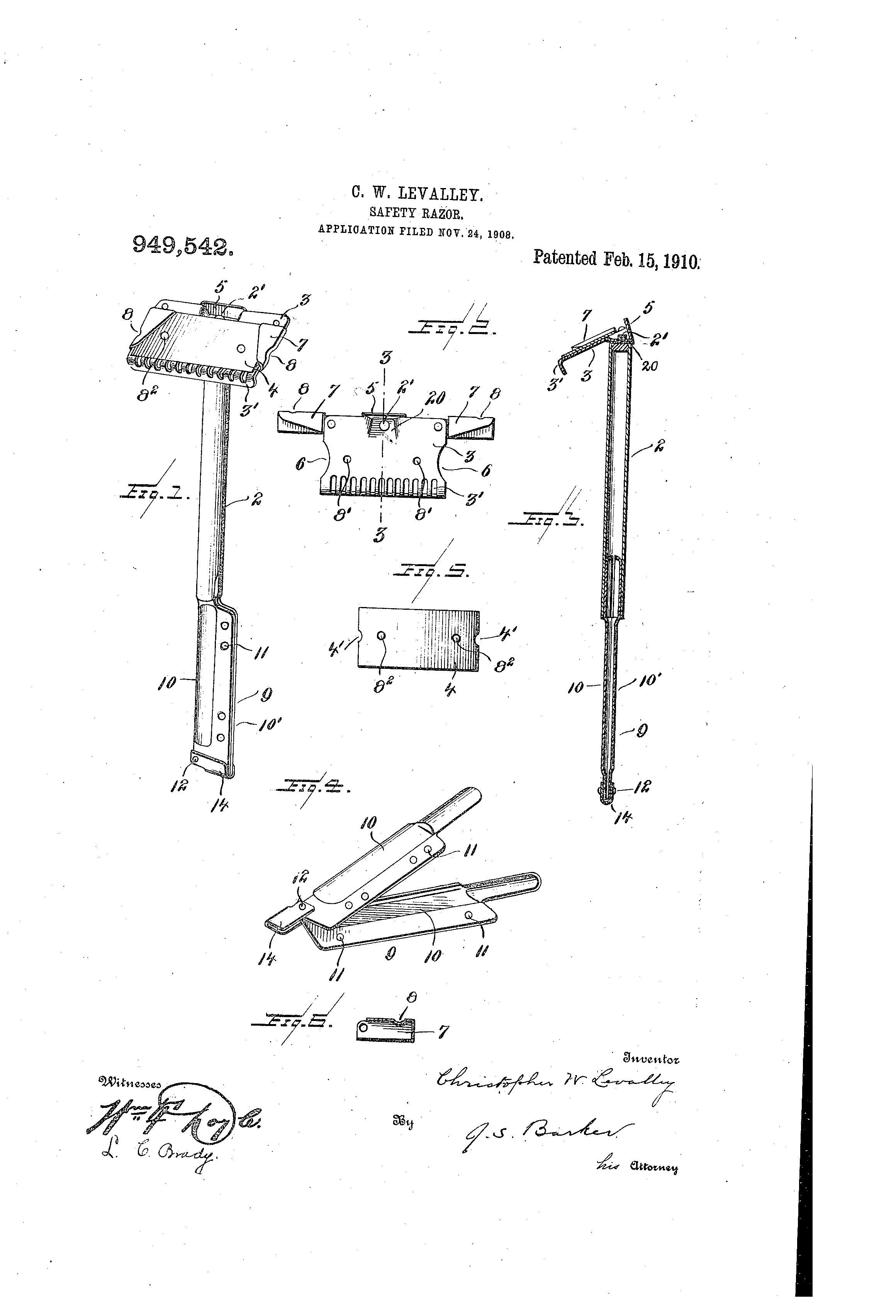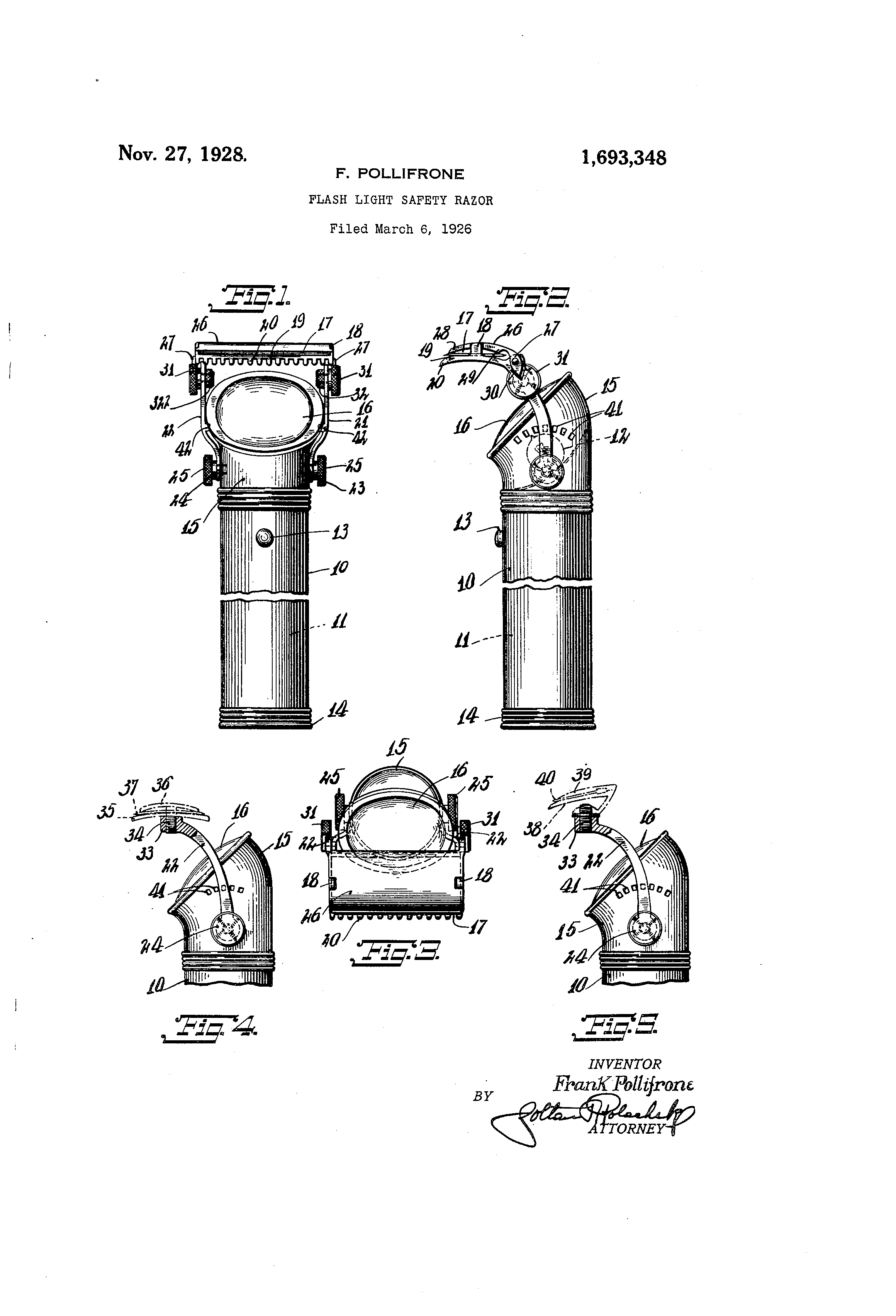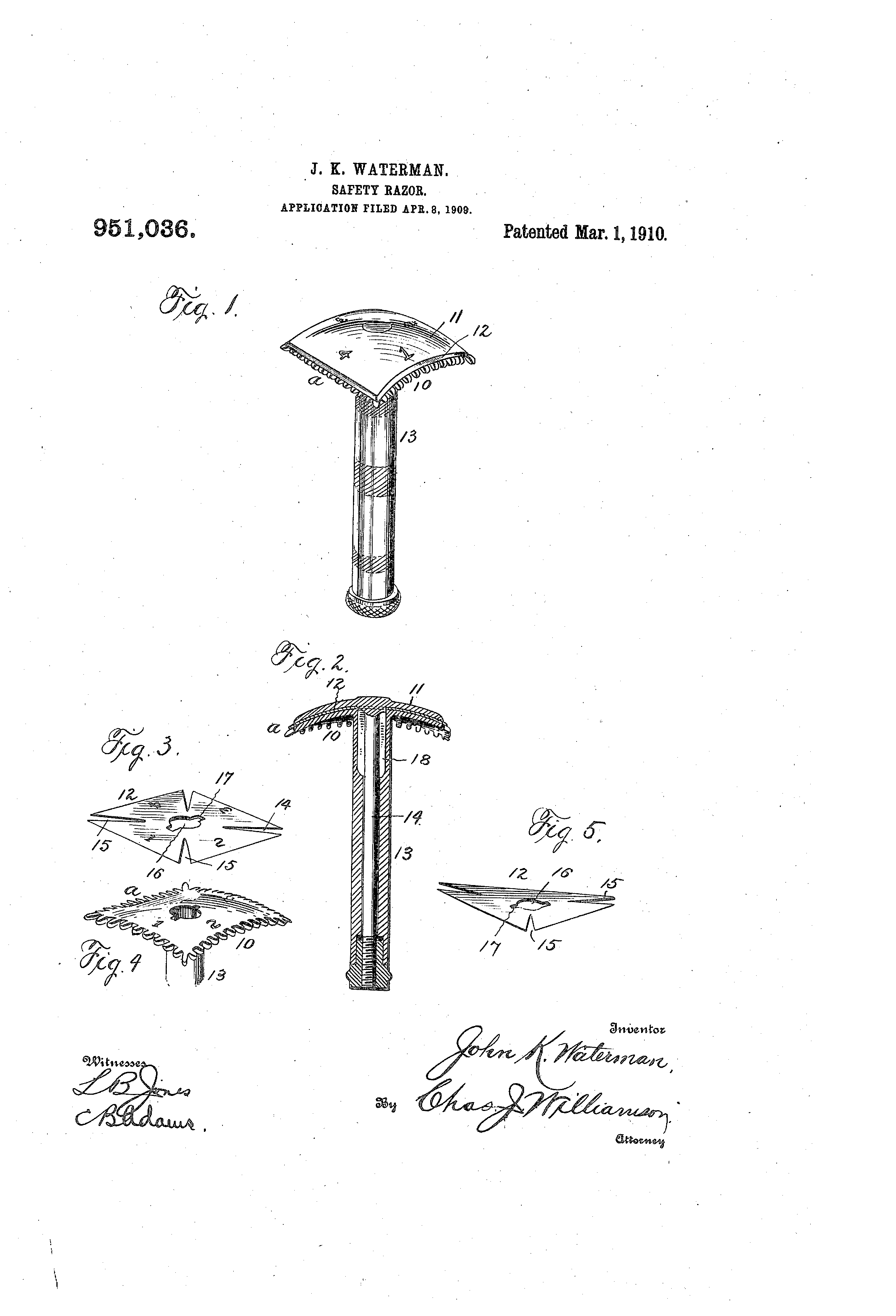When the aerosol can with canned foam appeared on the marked several inventors noted that unlike traditional soap and cream, the new canned stuff made a mess. A common idea seems to have been to introduce the stuff directly into your brush for less messy shaving.
In 1954 Mr Alfred B Miller got a patent on a shaving brush head that would convert a can of foam into a brush… although a rather large and awkward one.
…object of the invention is to provide a device of this character whereby a brush carrying element may be detachably connected to the top of an ordinary container having a supply of soap and wherein an element may be operated to actuate the soap dispensing nozzle of the container.
The next one I found was Mr Cleghorn John, whom in 1965 applied for a patent for a shaving brush that you could attach removably to a can of goo… I guess that is legalese for one you press against the top of the can to load.
…the principal object of our invention to provide a shaving brush that will be removably attachable to a lather dispensing container for use either independently, as an ordinary shaving brush, or in conjunction with a pressurized dispensing can for automatically feeding lather directly to the tip of the brush as needed in shaving.
Part of the patent also describes an “improved” aerosol can where the valve was operated by pushing sideways and not down, for use in conjunction with said brush.
Last one that I spotted on the first page of Google Patent Search was Mr Cleghorn John’s patent also applied for in 1965. It actually describes two brushes – with a simple hole through the base for pressing against the valve on a can of foam, one with the can of goo built into the handle…
In the invention in the instant application, these problems are eliminated by encompassing the soap dispensing container in the handle of the shaving brush. The soap is discharged into the base of the brush bristles thereby evenly distributing itself throughout the bristles.
Further, in the event a container separate from the brush is desired or necessary, this invention can readily be adapted to function in substantially the same manner even though utilizing the extraneous soap supply.
While I’ve never been a fan of canned goo myself, at least when the canned shaving foam was new on the marked there was attempts made to make it more like traditional shaving… I wonder if anything like this ever made it to the marked?
Like this:
Like Loading...













